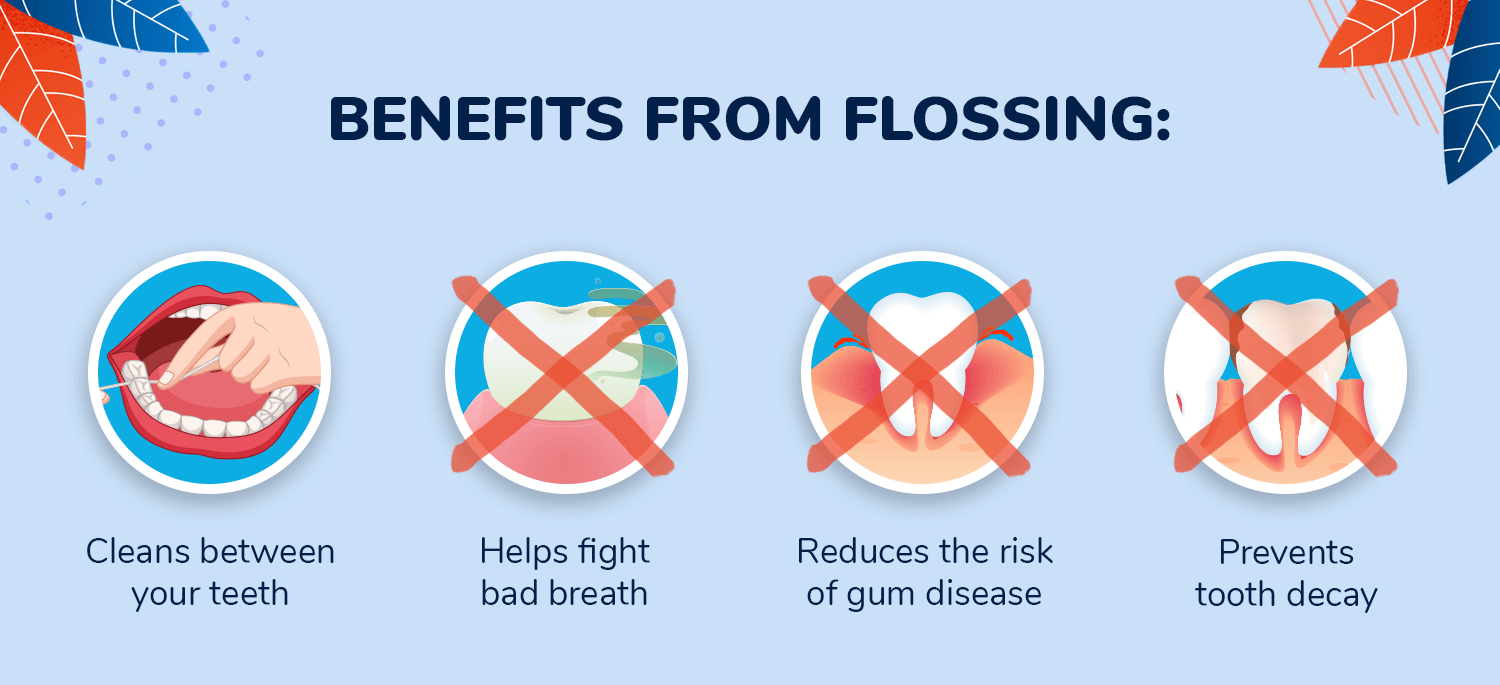When it comes to your mouth’s health, it’s not all about how straight your teeth are or how bright your smile is. You can’t forget about your gums! Since gum diseases are usually painless, most people have no idea that anything is wrong with their gums. Gum disease starts when plaque builds up under and along the gum line. Plaque can cause infections that hurt the gum and bone, leading to gum disease and tooth decay.
Gum disease is preventable. Here are a few ways to keep your gums healthy and strong:
- Brush the teeth properly:
Brushing the teeth properly is key to a healthy mouth and gums. Brush at least twice a day using a soft-bristle toothbrush and fluoride toothpaste. Brush the teeth at a 45-degree angle to the gums. Replace the toothbrush every 3 to 4 months.
- Floss daily:
Flossing removes food and plaque from between teeth and gums. Floss at least once a day. Do it at night, do it in the morning, or do it after lunch….just do it!
- Get regular dental cleanings:
Your dentist/periodontist can detect early gum disease symptoms if you see them regularly. Professional dental cleaning is the only way to remove tartar.
- Use a mouthwash:
Therapeutic mouthwashes prescribed by a dentist/periodontist can help reduce plaque, reduce the speed that tartar develops, and prevent or reduce gingivitis. A rinse helps remove food particles and debris from your mouth, though it’s not a substitute for flossing or brushing.
- Stop smoking:
Smoking makes a person more susceptible to gum disease because it weakens the immune system. Centers for Disease Control and Prevention (CDC) recommend quitting smoking to help reduce the risk of developing gum disease.
- Diet:
Along with using good oral hygiene practices, you can preserve your gum health. Different foods can have a positive or negative impact on your gum health.
Some of the foods that should be incorporated into the diet include:
- High-fiber fruits and vegetables.
- Vitamin C-rich fruits and vegetables.
- Dairy products, such as milk, cheese, and yogurt.
- It is best to avoid the following foods and beverages:
- Carbonated soft drinks.
- Sticky candies and sweets.
- Starchy foods.
So, take care of your teeth and gums.
“Are you flossing regularly?” is probably a question you get asked every single time you visit the dentist. And that’s because it’s important. Just brushing your teeth often isn’t enough to remove plaque and prevent cavities.
The tooth has 5 surfaces, but your toothbrush can only reach 3 of them. The two untouched surfaces are very close to the sides of other teeth, making it easy for food to get trapped in between. When food gets stuck in these gaps, it creates a breeding ground for bacteria to build up, creating plaque. This is where floss comes in handy – as it can get into these tight spaces and remove 80% of plaque.
When you neglect to floss, plaque and bacteria can easily build up. If they are not removed properly, the bacteria will eventually begin to irritate gum tissue. When left untreated, this can cause gingivitis – a periodontal disease that causes red, puffy, bleeding gums. The bacteria between your teeth will also destroy your tooth’s enamel, causing a cavity.
Flossing will remove this plaque to prevent a build-up of harmful bacteria. It will also make your teeth look brighter by removing plaque and excess food that you may not spot in a mirror.
If left untreated, bacteria in an unhealthy mouth can harm the rest of your body. Bacteria can enter the bloodstream and travel to other parts of the body, leading to heart disease and respiratory illnesses.
Flossing only takes a couple of minutes out of your day, but will have huge benefits on your long-term health. Floss at least once a day. Do it at night, do it in the morning, or do it after lunch….just do it!


